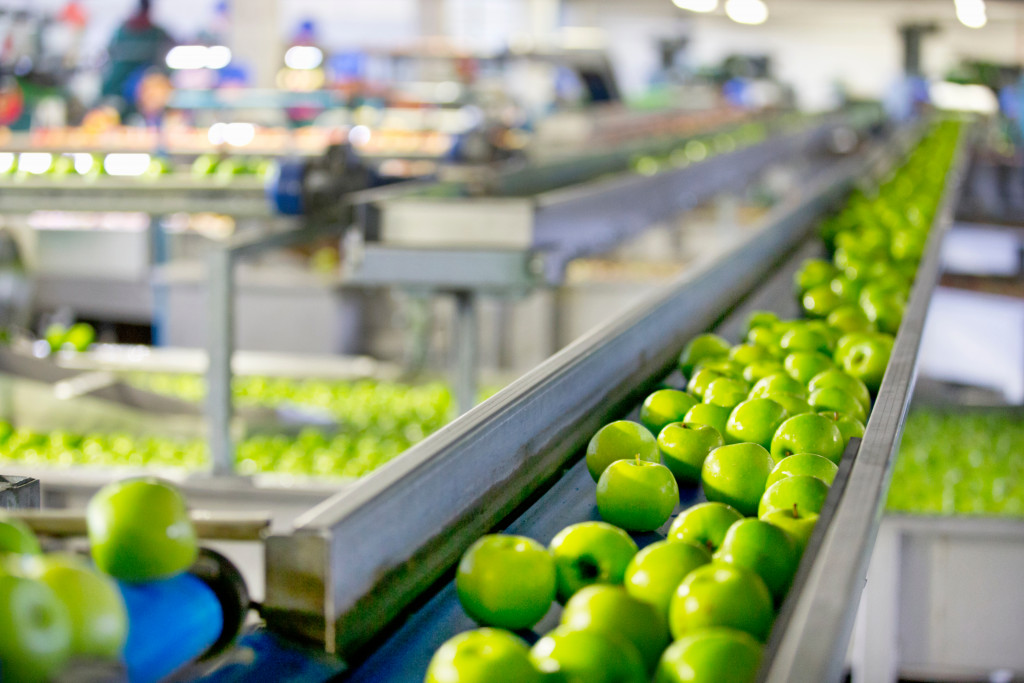- Automation and Robotics/AI can be used to increase production line efficiency and reduce costs.
- Machine Learning (ML) can be used to automate parts of the production process and increase efficiency.
- Predictive Maintenance can forecast failures and maintenance needs, saving energy and resources in the long run.
- Data Collection & Analysis (DC&A) can be used to monitor machinery performance and identify issues quickly.
In today’s competitive business environment, production line efficiency is key to staying ahead. Fortunately, technology can increase production line efficiency and help businesses remain competitive.
This article will explore some of these technologies and discuss how they can be implemented into an existing production process. By utilizing these tools effectively, businesses can increase their productivity and stay ahead of the curve.
Automation
Here are some ways you can utilize automation to increase production line efficiency:
Robotics & Artificial Intelligence (AI)

Robotics and Artificial Intelligence (AI) are immensely helpful tools in production lines worldwide. Such a big impact on the labor force makes industrial robot applications crucial application areas in increasing production line efficiency, as it helps reduce costs and workloads on manual laborers/employees within companies.
These technologies can take on assembly tasks that would otherwise require a more labor-intensive approach, allowing businesses to increase production line efficiency. This is due to their precise automation of repeatable, mundane tasks that can be replicated with minimal errors and maximum speed. Robotics & AI also have the capability for advanced sensing, which helps workforces optimize time management and boost throughput and quality of output efficiently.
Machine Learning
Machine Learning (ML) is a type of Artificial Intelligence (AI) that employs algorithms to analyze historical data and detect meaningful patterns. This data can then be used to make real-time decisions, allowing organizations to automate parts of their production process and increase efficiency.
ML supports self-learning systems that automatically obtain insights from large amounts of data and reduce the need for human intervention. By utilizing ML technology in a production setting, an organization can identify valuable operational trends and improve its overall performance. Additionally, it enables manufacturers to better understand customer behavior by analyzing the preferences and demands of certain products or services.
Predictive Maintenance
Predictive maintenance is an effective technique for improving efficiency across many production lines and industries. This type of maintenance utilizes data-driven analysis to anticipate the need for routine service, identify potential issues, and alert operators before machines fail or suffer from downtime.
Production managers can more accurately plan for future failures and maintenance needs by implementing predictive maintenance, saving energy and resources, and improving overall production flow. With predictive maintenance, operators can use real-time monitoring systems, including vibration, temperature, and pressure sensors that detect fluctuations in equipment behavior over a set period.
The software then interprets the data to build a reliable history of past performance trends that can be used to predict future system conditions, thus allowing production teams to plan ahead and increase efficiency while minimizing unexpected outages.
Data Collection & Analysis
Data Collection & Analysis (DC&A) technology is essential in increasing production line efficiency. By monitoring and measuring machinery performance, its input/output, and analyzing how it interacts within the overall production environment, businesses can create more efficient processes to reduce costs and increase productivity. DC&A technology captures data from various data sources, including sensors, controllers, human input, etc., and puts that data into actionable information.
This data can be used to identify broken machine parts quickly and easily so any issues don’t hold up production and to detect which parts of an assembly line need fine-tuning to operate optimally. By utilizing advanced analytics tools, plant operators can understand how otherwise invisible factors like pressure or fluid circulation affect their equipment’s performance—providing them with in-depth insights into how they can improve the operations of their production lines.
Inventory Management Solutions

Inventory Management Solutions (IMS) technology has become an increasingly attractive way to boost the efficiency of production lines. Businesses can optimize warehouse operations and reduce costs by automating processes and tracking products with greater accuracy. Proper utilization of IMS technologies requires an accurate understanding of a company’s stock levels, adjusting order points to ensure enough on hand when needed, and storing digital records in one unified location.
Businesses must evaluate their supply chain needs to determine how to best use IMS systems effectively. Proper inventory tracking and management is essential to ensure optimal product availability without excessive stock or higher-than-necessary inventory costs. Investing in these powerful forms of technology can yield lasting returns on investment, allowing companies to reduce waste, improve customer service times, enhance demand forecasting abilities, and achieve greater control over product availability.
Supply Chain Management
Supply Chain Management (SCM) is an integral technology in the modern manufacturing process as it enables distributors, suppliers, and producers to synchronize their efforts to provide greater efficiency. SCM focuses on strategic planning and cost-efficiency from a holistic point of view, with the ultimate goal being improved operational efficiency.
It involves using artificial intelligence and robotics technology to create an optimized production environment that identifies and guards against potential supply chain risks by providing efficient routes, data visibility, and self-learning analytics to quickly detect changes. This increased visibility helps predict future demand with unparalleled accuracy, allowing for more controlled inventory management and smoother operations.
With this foresight into product optimization and improved inventory levels, companies can deliver faster response times for customers, leading to higher degrees of customer satisfaction. Moreover, utilizing SCM has the potential to reduce costs by minimizing stock wastage while improving response times.
These are just some technologies that can increase production line efficiency. By understanding the capabilities and advantages of each technology, businesses can optimize their operations and remain competitive in the ever-evolving market.
